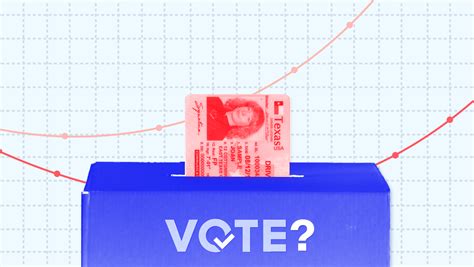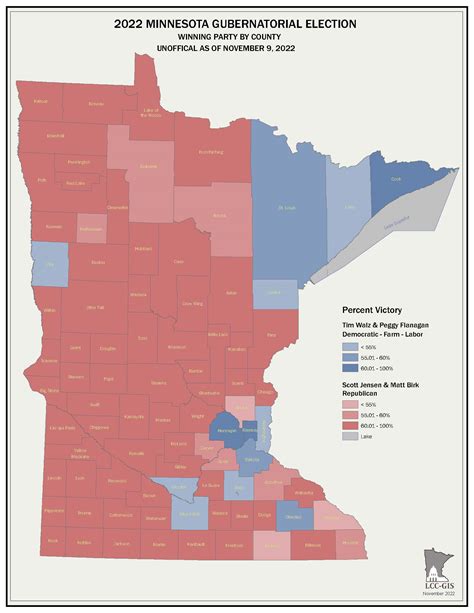Explore voter ID laws, their impact on turnout, election integrity, marginalized communities, and future legislation trends for the 2024 elections.As we approach the pivotal 2024 elections, understanding the nuances of voter ID laws has never been more critical. These laws, designed to authenticate voter identity, vary significantly across states, influencing everything from turnout rates to perceptions of election integrity. While proponents argue that voter ID requirements help prevent fraud, critics raise concerns regarding their potential impact on marginalized communities. This article delves into the multifaceted implications of these laws, examining their effect on voter turnout and the future of electoral legislation. Whether you’re a concerned citizen, activist, or simply a voter keen on understanding your rights, this comprehensive exploration will equip you with essential insights into the ongoing debate surrounding voter ID laws and their consequences for the upcoming elections.
Understanding Voter ID Requirements Across Different States
The implementation of Voter ID laws varies widely across the United States, impacting the electoral process at both state and national levels. Each state has its own requirements regarding the type of identification that voters must present at the polls. Here’s a closer look at how these requirements differ:
| State | Voter ID Requirement | Acceptable Forms of ID |
|---|---|---|
| Georgia | Photo ID required | Driver’s license, passport, military ID, college ID with photo |
| Texas | Photo ID required | Driver’s license, passport, handgun license, military ID |
| California | No ID required to vote | N/A |
| Florida | Photo ID required | Driver’s license, state ID, U.S. passport, military ID |
| Wisconsin | Photo ID required | Driver’s license, state ID card, student ID |
Several states like Georgia and Texas require voters to present a form of ID with a photo, while others, such as California, do not mandate any form of identification to cast a ballot. This variation can lead to confusion among voters and may impact turnout, particularly among those who may lack the required documentation.
Understanding the specifics of Voter ID laws in each state is crucial for ensuring that all eligible voters are able to exercise their rights in upcoming elections. The lack of uniformity in ID requirements not only creates barriers but also highlights the need for clarity and accessibility in the electoral process.
How Voter ID Laws Can Affect Voter Turnout
The implementation of Voter ID laws has been a contentious issue in the United States, sparking debates over their perceived necessity and impact on the electoral process. One of the most significant consequences these laws can have is on voter turnout, as various studies have shown that identification requirements can create barriers for certain groups of voters.
Research indicates that states with strict Voter ID laws often experience a decline in voter participation compared to those that do not impose such requirements. This decline is particularly evident among minority groups, low-income individuals, and younger voters, who may lack the necessary forms of identification. For instance, a study by the Brennan Center for Justice found that approximately 25% of eligible voters in the U.S. do not possess a government-issued photo ID, illustrating the potential disenfranchisement caused by these laws.
Furthermore, the process of obtaining a valid Voter ID can be burdensome and time-consuming, requiring individuals to navigate bureaucratic processes that may include fees, transportation issues, and time away from work. Such barriers can lead to decreased enthusiasm and participation on election day, reinforcing the steady decline in voter turnout rates observed in recent elections.
In addition, the uncertainty surrounding Voter ID requirements can deter voters from participating in elections altogether. Individuals may feel unsure if their identification will be accepted, leading to anxiety that discourages them from casting their votes. This phenomenon highlights the psychological impact of Voter ID laws, in addition to the logistical challenges they present.
As the 2024 elections approach, it is crucial for policymakers and advocacy groups to consider the implications of Voter ID laws on turnout. Striking a balance between ensuring election integrity and promoting inclusive participation is essential to achieving a robust democratic process.
The Role of Voter ID in Preventing Election Fraud
The debate surrounding Voter ID laws often positions them as crucial measures to enhance the integrity of the electoral process. Proponents assert that requiring individuals to present valid identification is an effective way to deter fraudulent activities during elections. This section explores how Voter ID laws are intended to mitigate concerns regarding election fraud.
One of the primary arguments in favor of Voter ID laws is the belief that they create a barrier against impersonation at the polls. By requiring voters to present a government-issued identification, officials can effectively verify the identity of each voter, ensuring that only eligible individuals cast ballots. This verification process aims to maintain public confidence in the electoral system by reducing the perceived risk of fictitious voting.
Additionally, supporters argue that Voter ID laws can assist in confirming voter registration details, which might otherwise be subject to manipulation. With proper identification, election officials can cross-reference a voter’s ID with the registration rolls, thus minimizing errors and potential disenfranchisement caused by outdated or incorrect voter information.
However, it is essential to note that the actual incidence of voter fraud is statistically low in many jurisdictions. Critics of Voter ID laws often highlight this discrepancy, arguing that the measures put in place may exacerbate barriers to voting without commensurate benefits in fraud prevention. Nonetheless, the narrative surrounding election integrity continues to drive discussions on the implementation and necessity of Voter ID laws as we approach the 2024 elections.
While Voter ID laws are positioned as safeguards against election fraud, the debate continues about their effectiveness and implications for voter accessibility. As states navigate these requirements, the broader impact on voter engagement and confidence in the electoral system will remain a critical point of analysis.
Implications of Voter ID Laws on Marginalized Communities
The implementation of Voter ID laws has far-reaching consequences, particularly for marginalized communities. These groups often face systemic barriers that may complicate their ability to obtain the necessary identification required to vote. Understanding these implications is crucial for assessing the overall impact of such laws on democratic participation.
Some of the main implications include:
| Challenge | Description |
|---|---|
| Access to ID | Numerous marginalized individuals may lack access to transportation, funds, or time necessary to acquire an ID, which reduces their participation in elections. |
| Financial Barriers | Some states may charge fees for obtaining IDs or required documents, disproportionately affecting low-income individuals. |
| Voter Education | A lack of education and awareness regarding Voter ID requirements can lead to confusion and misinformation, further discouraging participation. |
| Historical Discrimination | Communities that have historically faced voter suppression may interpret ID requirements as a continuation of discriminatory practices, eroding trust in the electoral process. |
While Voter ID laws are often justified as measures to ensure the integrity of elections, they can inadvertently disenfranchise marginalized communities, posing significant challenges to fair and equitable access to the voting process. Addressing these implications is essential for fostering an inclusive democracy and ensuring that every eligible voter can exercise their right to vote.
Future Trends: Voter ID Legislation in 2024 Elections
As we approach the 2024 elections, the conversation around Voter ID laws continues to evolve. Several key trends are emerging that could significantly shape the legislative landscape and influence how voters engage with the electoral process.
Firstly, we are likely to see increased polarization on the issue of Voter ID laws at both the state and federal levels. Some states may push for stricter identification requirements, while others might seek to relax existing laws in the interest of expanding access to voting. This divide is often reflective of broader political ideologies, leading to a patchwork of laws that could confuse voters and complicate the election process.
Furthermore, public opinion surrounding Voter ID laws appears to be shifting. As awareness of issues relating to election accessibility grows, advocacy groups are increasingly mobilizing efforts to highlight the challenges faced by underrepresented communities. This could lead to heightened calls for legislative reform aimed at making voting more accessible rather than restrictive.
In addition, technology is likely to play a critical role in the future of Voter ID legislation. The integration of digital identification methods and biometric verification systems is being explored in various states. This could make it easier for voters to provide proof of identity while also addressing concerns about security and fraud prevention.
Moreover, court challenges to existing Voter ID laws are expected to continue as stakeholders advocate for or against these regulations. Legal battles can lead to fluctuating laws that may affect voter confidence and turnout in the process.
The potential for a national conversation around election reform may gain traction in 2024. Should significant trends emerge regarding Voter ID requirements, it may prompt legislators to consider comprehensive voting rights legislation at the federal level.
The evolving landscape of Voter ID laws will play a crucial role in shaping the 2024 elections. From state-level variability to the impact of technology and public sentiment, these factors will collectively influence voter engagement and turnout as we approach the polls.
Frequently Asked Questions
What are Voter ID laws?
Voter ID laws are regulations that require individuals to present specific forms of identification when voting to verify their identity.
How do Voter ID laws vary by state?
Voter ID laws differ significantly across states, with some requiring photo identification, while others accept non-photo IDs or do not require any ID at all.
What is the purpose of implementing Voter ID laws?
Proponents argue that Voter ID laws aim to prevent voter fraud and ensure the integrity of elections, while opponents claim they can disenfranchise eligible voters.
How might Voter ID laws impact voter turnout in the 2024 elections?
Voter ID laws may lower turnout among certain demographics, particularly those without IDs, leading to concerns about equitable access to voting.
Are there any legal challenges surrounding Voter ID laws?
Yes, many Voter ID laws have faced legal challenges, with critics arguing that they violate the Voting Rights Act and disproportionately affect minorities.
What evidence exists regarding voter fraud and the need for Voter ID laws?
Studies have shown that voter fraud is exceedingly rare in the U.S.; therefore, critics argue that the strictness of Voter ID laws is unnecessary.
How can voters prepare for potential Voter ID requirements in the 2024 elections?
Voters should check their state’s ID requirements before the election, make sure they have the necessary identification, and educate themselves about voting processes in their area.






